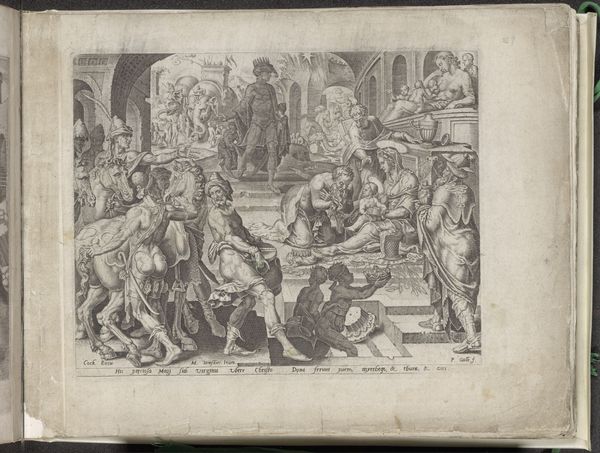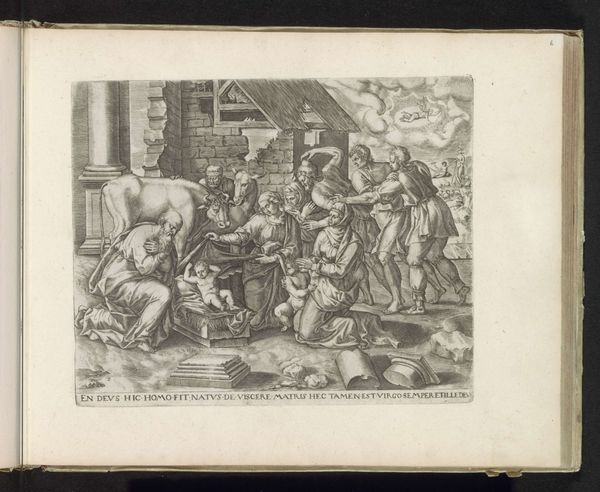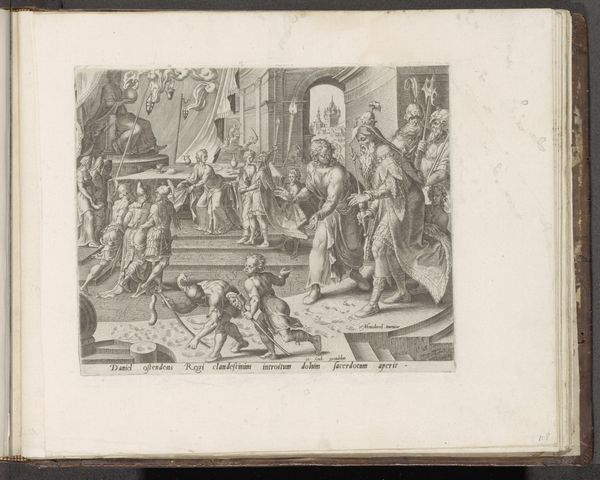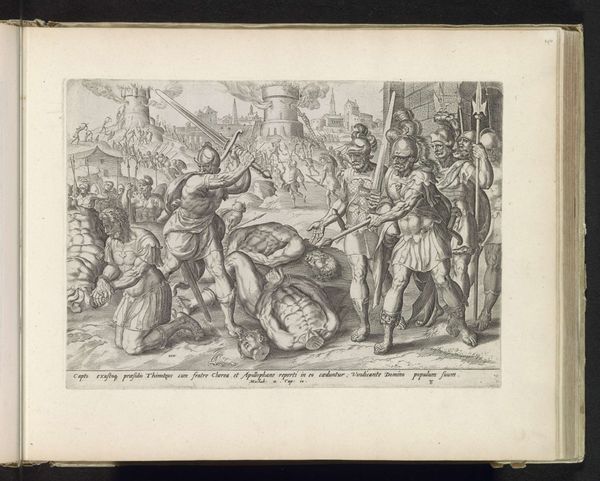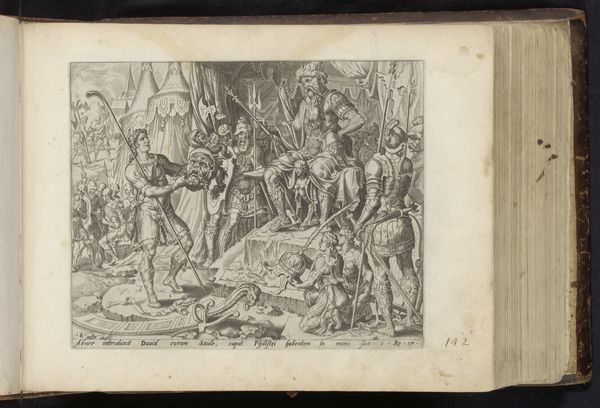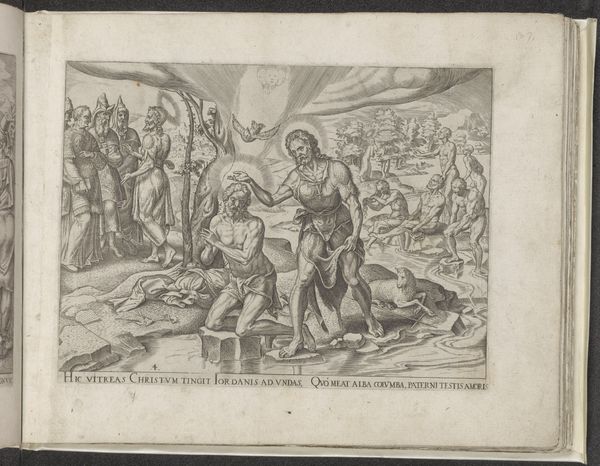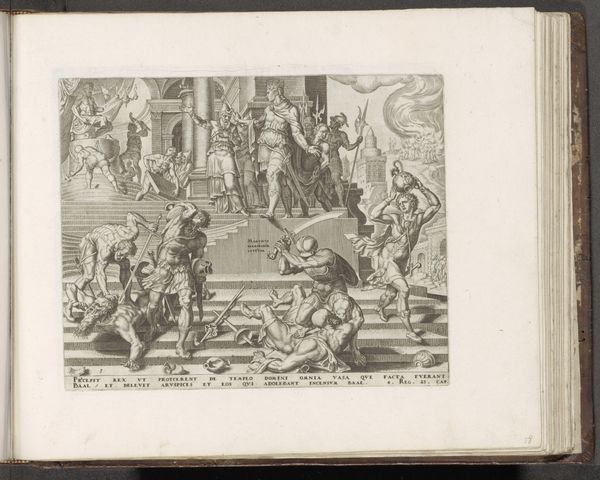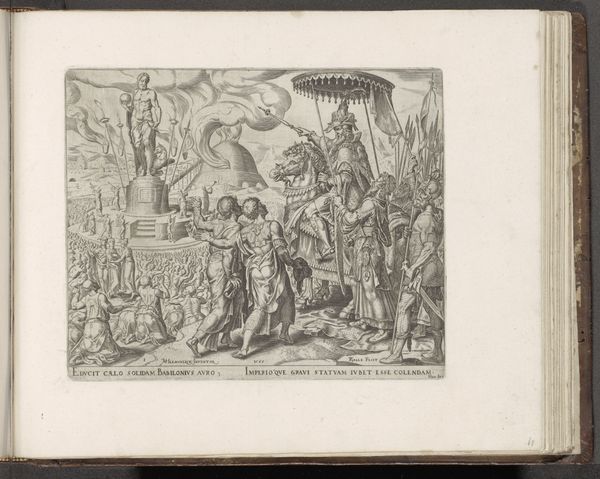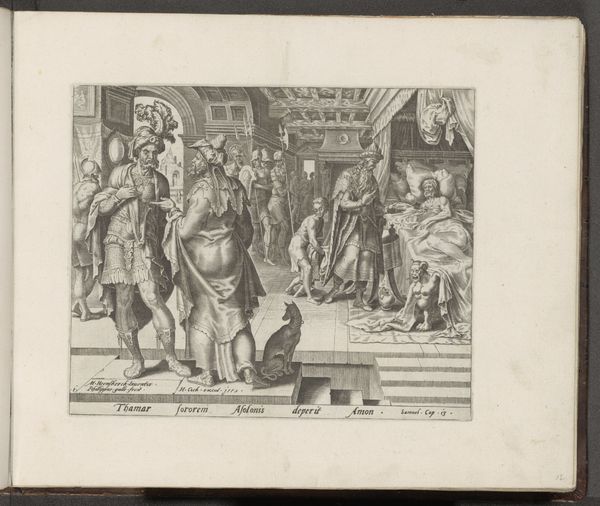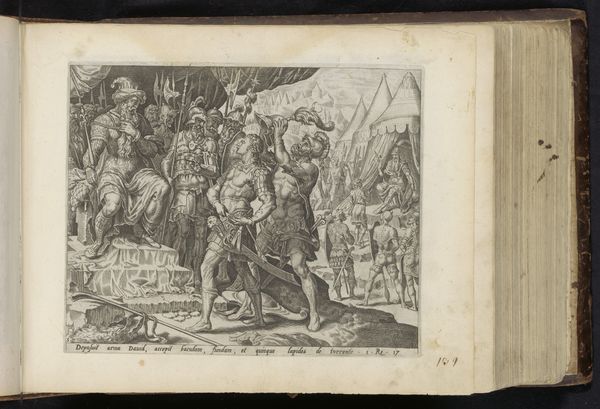
print, engraving
# print
#
mannerism
#
figuration
#
history-painting
#
northern-renaissance
#
engraving
Dimensions: height 199 mm, width 246 mm
Copyright: Rijks Museum: Open Domain
Philips Galle’s engraving, Stoning of Naboth, visualizes a biblical narrative steeped in themes of power, injustice, and resistance. Made during the 16th century, a time of religious conflict and social upheaval, Galle’s work reflects the era’s complex relationship with scripture and morality. The image portrays the execution of Naboth, who is stoned to death for refusing to sell his vineyard to King Ahab. This story, laden with implications of abuse of power, becomes a lens through which we can examine the intersections of class and authority. Notice how the figures enacting violence are rendered with a stark muscularity, emphasizing their physical dominance, while Naboth, kneeling, embodies vulnerability. Galle invites us to consider the human cost of unchecked power. The stoning of Naboth is not just a historical event, but a potent symbol of resistance against oppression. It reflects the personal and collective struggle for justice, echoing through centuries of art and activism.
Comments
No comments
Be the first to comment and join the conversation on the ultimate creative platform.
